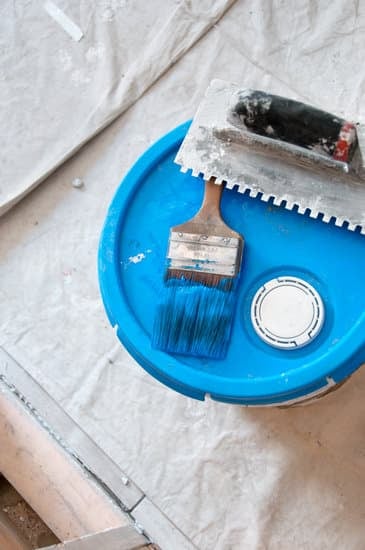Where did home improvement go? In this article, we will delve into the evolution of home improvement trends over the years. From the rise and fall of home improvement TV shows to the impact of social media on DIY culture, we will examine how the landscape of home improvement has transformed.
The way people approach home improvement projects has shifted significantly, influenced by various factors such as sustainability, technology, and online platforms. With changing consumer preferences and advancements in technology, traditional home improvement stores have faced a decline. This has paved the way for online home improvement platforms and apps to gain popularity among homeowners looking for convenience and a wider range of options.
As we navigate through the changing landscape of home improvement trends, it is crucial to explore how these shifts have shaped the industry. By reflecting on past trends and looking ahead to what we can expect in 2021 and beyond, we can better understand where home improvement is headed in the future. Stay tuned as we explore the various facets of this ever-evolving sector.
The Rise and Fall of Home Improvement TV Shows
Home improvement TV shows have long been a staple in the world of home renovation and design. Shows like “Trading Spaces,” “Fixer Upper,” and “This Old House” captured audiences with their inspiring transformations, expert tips, and entertaining hosts. These shows not only provided valuable insights into various home improvement projects but also sparked creativity and motivation in viewers looking to update their own spaces.
One of the reasons behind the rise of home improvement TV shows was the accessibility they provided to viewers. With step-by-step demonstrations, before-and-after reveals, and budget-friendly ideas, these shows made it seem achievable for anyone to tackle a DIY project. Viewers could easily gather inspiration, learn new techniques, and gain confidence to take on their own renovations.
However, as streaming services gained popularity and viewing habits changed, traditional home improvement TV shows began to see a decline in viewership. The rise of on-demand content meant that viewers were no longer limited to scheduled programming on network television. This shift in how people consumed media led to a drop in ratings for many home improvement shows, causing some beloved programs to be canceled or put on hiatus.
The Impact of Social Media on DIY Culture
Social media has undoubtedly revolutionized the way DIY culture operates in the realm of home improvement. Platforms like Instagram, Pinterest, and YouTube have become go-to sources for inspiration, tutorials, and ideas for those looking to spruce up their living spaces. These platforms have democratized the process of home improvement, allowing individuals to showcase their own projects and share tips with a global audience.
One of the key impacts of social media on DIY culture is the emphasis on creativity and personalization. Users can now easily access a wide array of design styles, techniques, and materials from around the world, allowing them to tailor their home improvement projects to suit their unique preferences. Additionally, social media has fostered a sense of community among DIY enthusiasts, providing a space for users to connect, collaborate, and support one another in their creative endeavors.
Moreover, social media has also played a significant role in shaping consumer behavior in the home improvement industry. With influencers and bloggers endorsing certain products or brands on their platforms, users are more likely to be influenced by these recommendations when embarking on their own projects. This shift towards online platforms has changed the landscape of traditional brick-and-mortar home improvement stores. elevating the digital experience as an essential component in planning and executing home renovation projects.
The Shift Towards Sustainability in Home Improvement
One major aspect of sustainability in home improvement is the use of renewable materials such as bamboo, reclaimed wood, and recycled glass. These materials not only help reduce deforestation and waste but also add a unique touch to home decor.
Additionally, energy-efficient solutions like solar panels, smart thermostats, and LED lighting have become popular choices for homeowners looking to reduce their electricity consumption and lower their utility bills. By incorporating these sustainable elements into their homes, individuals can make a positive impact on the environment while also creating a healthier living space for themselves and their families.
Furthermore, the shift towards sustainability in home improvement is also being driven by a desire for long-term cost savings and increased property value. Energy-efficient homes tend to have lower operating costs due to reduced energy consumption, making them more affordable to maintain in the long run.
Additionally, sustainable features like green roofs, rainwater harvesting systems, and native landscaping can enhance curb appeal and increase resale value. As more homeowners recognize the benefits of sustainable living practices, we can expect this trend to continue shaping the future of home improvement.
| Sustainability Trends in Home Improvement | Key Points |
|---|---|
| Renewable Materials | Bamboo, reclaimed wood, recycled glass |
| Energy-Efficient Solutions | Solar panels, smart thermostats, LED lighting |
| Cost Savings & Property Value | Lower operating costs, increased resale value |
The Influence of Technology on Home Improvement Projects
In recent years, technology has played a significant role in shaping the way home improvement projects are approached and executed. From virtual reality tools that allow homeowners to visualize renovations before they begin to smart home devices that make properties more efficient and convenient, technology has transformed the industry.
One of the key areas where technology has made a significant impact is in project planning and design. With the rise of software programs and apps that enable users to create detailed floor plans, experiment with different color schemes, and even virtually decorate rooms, homeowners now have access to powerful tools that can streamline the renovation process.
Moreover, the use of drones for home inspections and surveys has become increasingly common in the home improvement sector. Drones provide a fast and cost-effective way to assess the condition of roofs, identify potential structural issues, and capture accurate measurements of properties. This technology not only saves time but also enhances safety by eliminating the need for workers to climb ladders or access hard-to-reach areas.
Additionally, advancements in 3D printing have revolutionized the production of custom-made fixtures, furniture, and decorative elements for homes. Homeowners can now easily personalize their living spaces with unique pieces created using sustainable materials through this innovative technology.
Furthermore, the integration of artificial intelligence (AI) and Internet of Things (IoT) devices into homes has enabled greater automation and control over various systems such as lighting, heating, security, and energy management. Smart thermostats adjust temperature settings based on occupancy patterns, while connected appliances can be remotely monitored and controlled via smartphones. These technological innovations not only increase convenience for homeowners but also contribute to energy efficiency and sustainability efforts within residential properties.
| Technology Impact | Data |
|---|---|
| Use of VR tools in project planning | Streamline renovation process |
| Utilization of drones for inspections | Enhances safety & accuracy |
| Integration of AI & IoT devices | Increases automation & energy efficiency |
The Decline of Traditional Home Improvement Stores
Traditional home improvement stores have long been a staple in the retail landscape, serving as go-to destinations for DIY enthusiasts and homeowners looking to spruce up their living spaces. However, in recent years, these brick-and-mortar establishments have experienced a decline in popularity, leaving many to question: where did home improvement go?
Changing Consumer Behavior
One of the main factors contributing to the decline of traditional home improvement stores is changing consumer behavior. With the rise of online shopping and e-commerce platforms, more and more consumers are choosing to purchase their home improvement supplies from the comfort of their own homes. The convenience of browsing products online, reading reviews, and comparing prices has drawn many away from physical store locations.
Competition From Big Box Retailers
Another challenge facing traditional home improvement stores is the increasing competition from big box retailers like Walmart and Target. These larger chains offer a wide range of products at competitive prices, making them an attractive option for consumers looking to tackle home improvement projects on a budget. As a result, traditional stores have struggled to keep up with the sheer volume and variety of products offered by their larger competitors.
The Rise of Online Home Improvement Platforms and Apps
The Convenience of Online Home Improvement Platforms
With the advancement of technology, the rise of online home improvement platforms and apps has revolutionized the way homeowners approach their projects. These platforms offer a convenient way to browse through products, get inspiration, and even connect with professionals without having to leave the comfort of their homes. Whether you’re looking for design ideas, expert advice, or the perfect paint color, these platforms have become a go-to resource for DIY enthusiasts and homeowners alike.
Connecting Homeowners With Professionals
One of the key advantages of online home improvement platforms is the ability to connect homeowners with professional contractors and designers. Instead of relying on word-of-mouth recommendations or blindly choosing a contractor from a phone book, these platforms allow users to read reviews, view portfolios, and compare quotes from multiple professionals. This not only simplifies the hiring process but also ensures that homeowners are getting quality work done by trusted professionals.
Customization and Personalization for Every Project
Another trend seen in online home improvement platforms is the emphasis on customization and personalization for every project. From virtual room design tools to personalized product recommendations based on style preferences, these platforms are making it easier for homeowners to bring their vision to life.
With just a few clicks, users can create mood boards, explore different color schemes, and even visualize how different pieces will look in their space – ultimately making the home improvement process more interactive and engaging than ever before.
The Future of Home Improvement
Another trend to watch for in the world of home improvement is the growing focus on sustainable and eco-friendly practices. With a greater emphasis on climate change and environmental conservation, more homeowners are choosing to prioritize sustainability in their renovation projects.
This includes using recycled materials, energy-efficient appliances, solar panels, water-saving fixtures, and environmentally friendly building practices. The shift towards sustainability not only benefits the planet but also helps homeowners save money on utility bills in the long run.
Additionally, in the future of home improvement, we can expect to see a continued rise in online platforms and apps that cater to DIY enthusiasts and homeowners looking for inspiration and guidance on their projects. These platforms provide access to tutorials, design ideas, product recommendations, and even virtual consultations with professionals.
With more people turning to digital solutions for their home improvement needs, traditional brick-and-mortar stores may continue to face challenges as online shopping becomes increasingly popular. As technology advances further and online resources become more sophisticated, the way we approach home improvement projects will undoubtedly continue to transform.
Conclusion
In conclusion, the landscape of home improvement has undergone significant changes over the years, with various factors contributing to its evolution. From the rise and fall of home improvement TV shows to the influence of social media on DIY culture, the way we approach and execute home projects has transformed drastically. The shift towards sustainability in home improvement practices reflects a growing awareness of environmental impact, while advancements in technology have revolutionized how we plan and complete projects.
Traditional home improvement stores have seen a decline, giving way to online platforms and apps that offer convenience and accessibility to a wider range of tools, materials, and inspiration. This shift highlights the changing preferences of consumers in an increasingly digital world. As we look towards the future of home improvement trends in 2021 and beyond, it is evident that adaptability and innovation will continue to play key roles in shaping how we improve our living spaces.
Overall, as we reflect on where home improvement has gone, it is clear that the industry has embraced change and adapted to meet the evolving needs and preferences of homeowners. The future holds exciting possibilities for the integration of technology, sustainability, and creativity into our home improvement endeavors. As we navigate these changes, one thing remains certain: the desire to create beautiful and functional spaces within our homes will always be a driving force behind our pursuit of improvement.
Frequently Asked Questions
Why Did Home Improvement Go Off the Air?
Home Improvement went off the air in 1999 after an eight-season run. The decision to end the show was mainly due to Tim Allen’s desire to focus on other acting opportunities and pursue different projects outside of television.
What Happened to the Home Improvement Show?
After Home Improvement ended, the cast members went on to pursue various acting careers in both television and film. Tim Allen continued his successful career with roles in movies like the “Toy Story” franchise, while Patricia Richardson took on smaller television roles.
What Happened to Randy Taylor Home Improvement?
Jonathan Taylor Thomas, who played Randy Taylor on Home Improvement, decided to leave the show during its eighth season to focus on his education. He later attended Harvard University and has occasionally appeared in film and television projects since then.

I’m thrilled to have you here as a part of the Remodeling Top community. This is where my journey as an architect and remodeling enthusiast intersects with your passion for transforming houses into dream homes.





